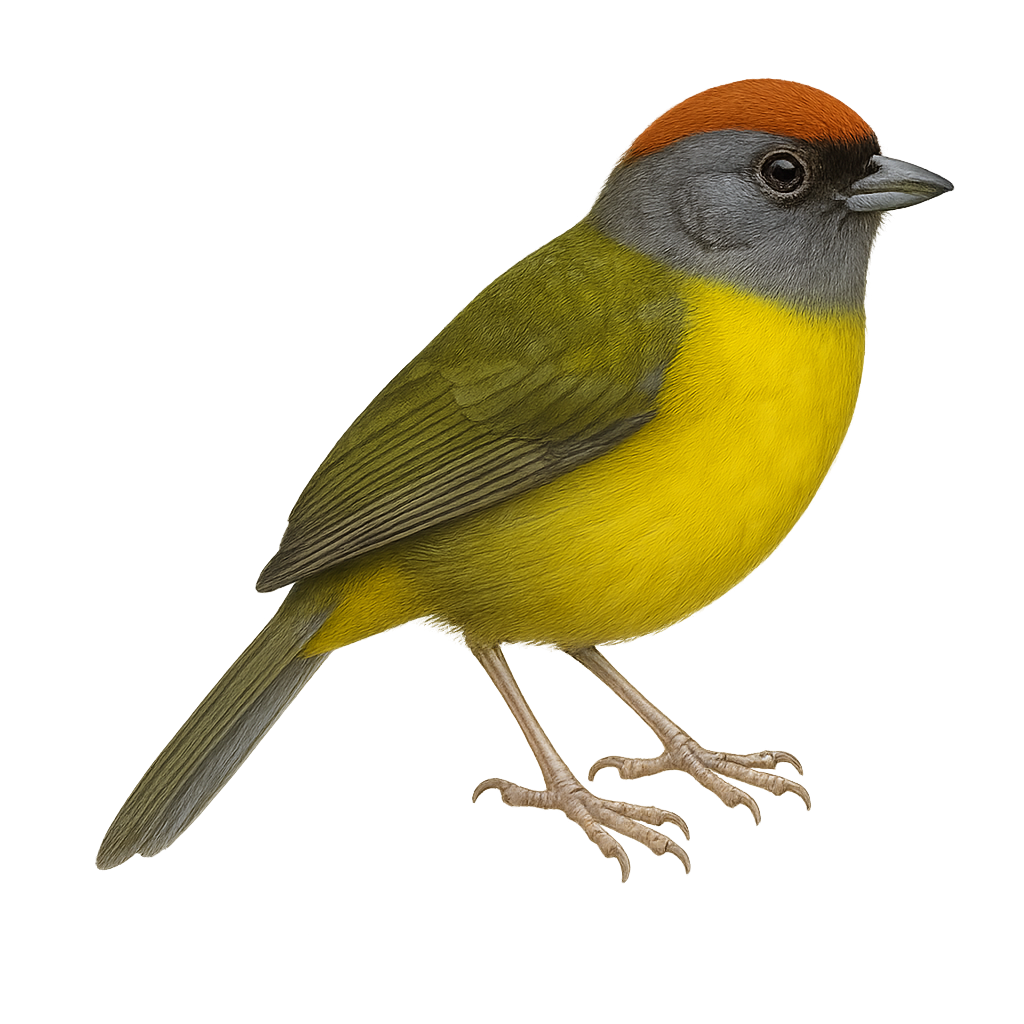Your wildlife photography guide.
Explore the rusty-capped brushfinch in detail, study its behavior, prepare your shots.
Where to observe and photograph the rusty-capped brushfinch in the wild
Learn where and when to spot the rusty-capped brushfinch in the wild, how to identify the species based on distinctive features, and what natural environments it inhabits. The WildlifePhotographer app offers tailored photography tips that reflect the rusty-capped brushfinch’s behavior, helping you capture better wildlife images. Explore the full species profile for key information including description, habitat, active periods, and approach techniques.
Rusty-capped Brushfinch
Scientific name: Atlapetes pileatus

IUCN Status: Least Concern
Family: PASSERELLIDAE
Group: Birds
Sensitivity to human approach: Suspicious
Minimum approach distance: 10 m
Courtship display: June to July
Incubation: 13-15 jours
Hatchings: June to July
Habitat:
Humid forests, wooded areas, mountains
Activity period :
Primarily active during the day, with peak activity in the morning and late afternoon.
Identification and description:
The Rusty-capped Brushfinch, scientifically known as Atlapetes pileatus, is a passerine bird belonging to the family Passerellidae. It is primarily found in the humid montane forests and wooded areas of Mexico and Guatemala. This bird is notable for its varied plumage, with a distinctive rusty cap that gives it its name. Its chest is often pale gray, while its wings and back display shades of brown and olive green. The Rusty-capped Brushfinch is a discreet bird, often seen in small groups or pairs, feeding mainly on insects and fruits. Its melodious and varied song is a delight for birdwatchers.
Recommended lens:
400 mm – adjust based on distance, desired framing (portrait or habitat), and approach conditions.
Photography tips:
To photograph the Rusty-capped Brushfinch, focus on humid forests and wooded mountain areas where it is most commonly seen. Use a 400mm lens or longer to capture precise details of its varied plumage. Be patient and discreet, as this bird is suspicious and prefers quiet spots. Listen carefully to its melodious song to locate its presence. Opt for early morning hours to take advantage of soft, natural light.
The WildlifePhotographer App is coming soon!
Be the first to explore the best nature spots, track rutting seasons, log your observations, and observe more wildlife.
Already 1 432 wildlife lovers subscribed worldwide

